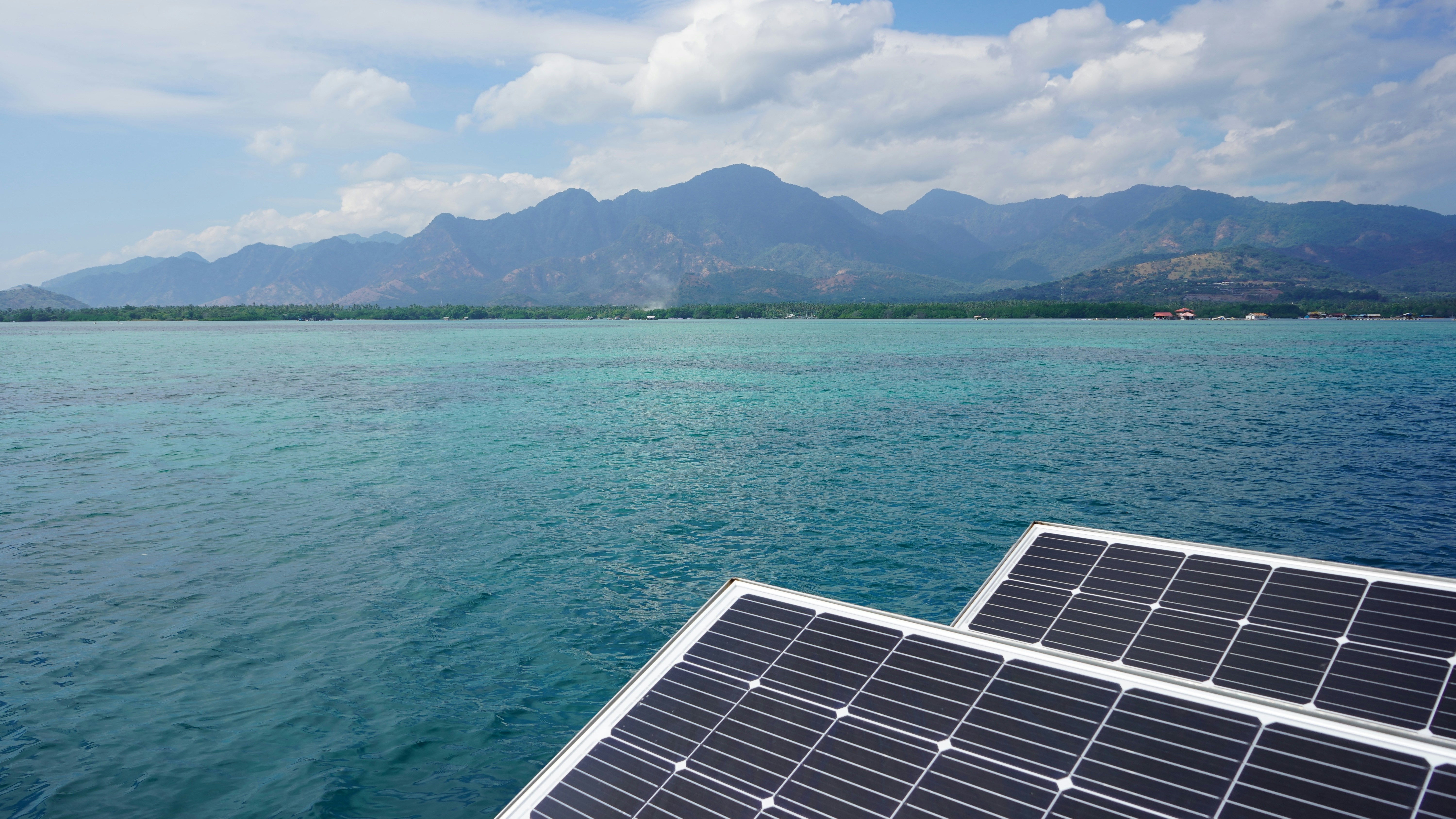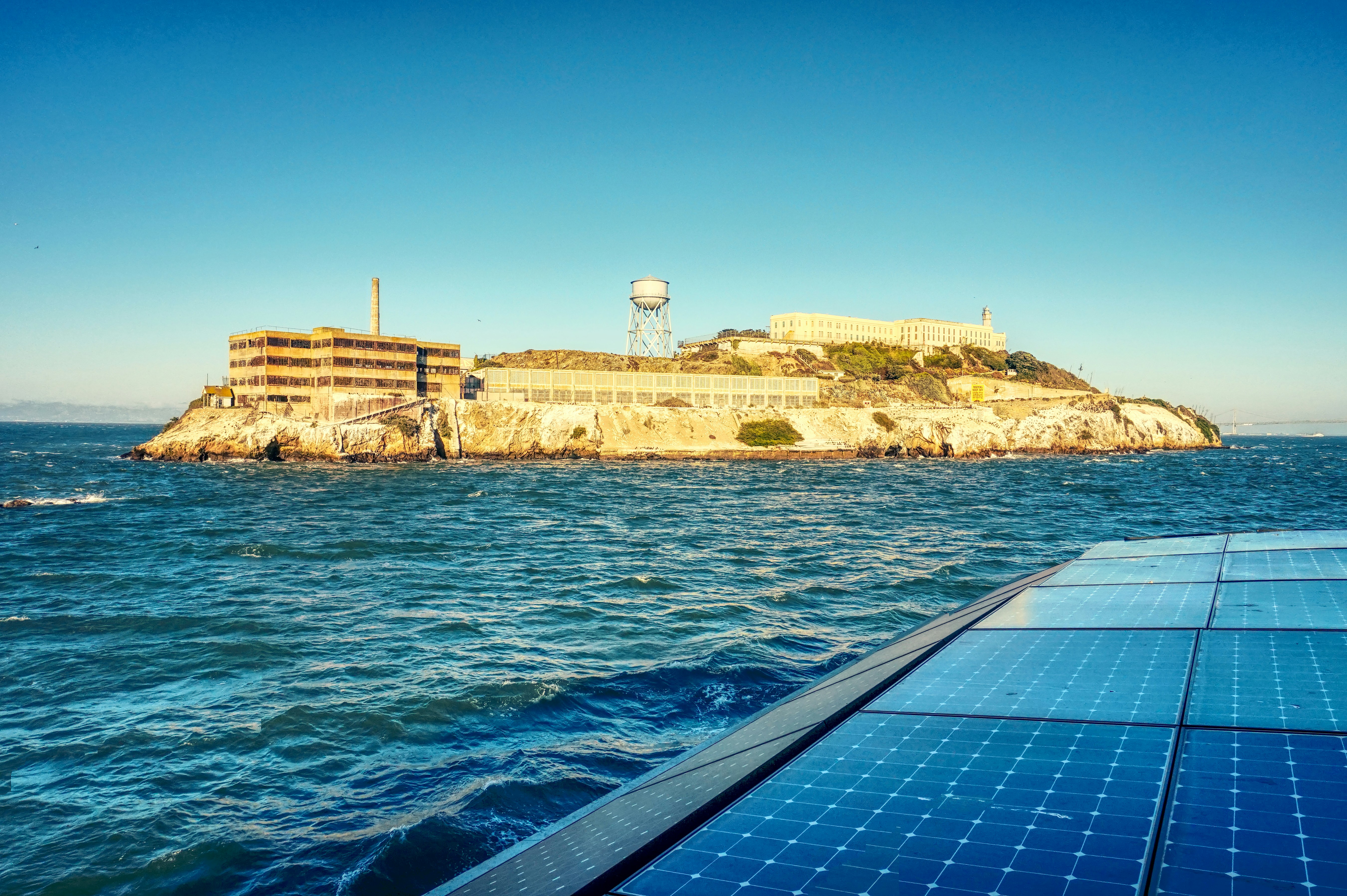Published on 16 September 2025
Floating Solar Power: why panels on water are the future of energy

A New frontier for solar energy
Floating photovoltaic, also known as floating solar, is one of the most innovative technologies in the energy sector.
The idea behind it is simple: use existing bodies of water - such as artificial lakes, agricultural reservoirs, abandoned quarries, or industrial basins - to host solar panels capable of generating electricity.
This solution saves land space, reduces pressure on agricultural land, and in some cases, even increases panel efficiency thanks to the cooling effect of the water.
How a floating solar system works
Floating photovoltaic systems are built on modular platforms that support the solar panels. These platforms are made of reinforced plastic materials and are anchored to the bottom or the shores of the water body to ensure stability, even in the event of wind or fluctuating water levels.
From an electrical perspective, the principle is the same as any traditional solar installation: the modules generate energy, which can be consumed on-site, fed into the grid, or stored in batteries.
Would you sell your used panels?
Register on KTSWhy choose water? The advantages of floating photovoltaics
Floating solar is not just an alternative installation solution — it comes with several unique benefits:
No use of agricultural land: the system makes use of existing bodies of water, which are often underutilized.
Higher efficiency: modules cooled by water can generate 10–15% more energy than ground-mounted systems.
Reduced evaporation: partially covering water surfaces can reduce water loss by up to 70%, a crucial advantage in agricultural settings.
Low visual impact: floating installations are generally less visually intrusive than large ground-based solar farms.
Challenges to Overcome
Alongside the advantages, floating photovoltaics also pose some critical challenges:
Installation costs remain higher than ground-mounted systems, due to floating structures and anchoring requirements.
Maintenance is more delicate, requiring the management of corrosion, biofouling, and fluctuating water levels.
There's also the issue of material durability, as components must endure harsh environmental conditions for decades.
Lastly, in Italy, the permitting process is still underdeveloped and can represent a barrier to widespread adoption.
Pros and Cons at a glance
Advantages of floating photovoltaics
Land use → Doesn’t take up agricultural land, uses existing water bodies.
Efficiency → Modules produce 10–15% more thanks to natural cooling from the water.
Water resources → Reduces evaporation by up to 70%, helping agriculture.
Long-term costs → Technology is becoming cheaper with large-scale deployment.
Landscape impact → Generally limited, less intrusive than large ground arrays.
Disadvantages of Floating Photovoltaics
Land use → Only installable on suitable and specifically characterized basins.
Efficiency → Maintenance is more complex than traditional ground systems.
Water resources → Potential effects on aquatic ecosystems must be carefully evaluated.
Initial costs → Still 15–30% higher than conventional installations.
Permitting process → Regulations are not standardized and permits can be complex.
This comparison shows that the technology is very promising, though not without its real-world challenges, which must be addressed through careful planning and targeted policy support.
Floating photovoltaics in Italy
In Italy, floating photovoltaics are still in the early stages, but the potential is huge. According to a study cited by Il Sole 24 Ore, Italian water basins could host up to 25 GW of floating solar power.
To put this into perspective, that’s comparable to a significant portion of the capacity needed to meet the 2030 targets outlined in the PNRR (National Recovery and Resilience Plan). Several pilot projects have already been developed on abandoned quarries and artificial basins, especially in Northern Italy, to test the effectiveness and sustainability of the technology.
Italy vs abroad: where do we stand?
Looking beyond borders helps us understand where we are — and where we could go:
China → Over 3 GW installed, global leader with large-scale floating power plants.
India → Around 2 GW, mostly on artificial lakes and dams.
Japan → Around 500 MW, spread across small reservoirs.
Italy → Less than 5 MW, limited to pilot projects on quarries and basins.
This comparison clearly shows that Italy is still in an experimental phase. However, the growth potential is significant, especially considering the availability of artificial basins and disused quarries.
Typical applications of water basins
Not all bodies of water are suitable for floating solar. However, some settings offer ideal conditions and specific benefits:
Abandoned quarries → Environmental restoration and reuse of inactive industrial areas.
Agricultural basins → Irrigation reservoirs, with benefits in both energy production and evaporation reduction.
Industrial basins → Cooling tanks or process reservoirs, making use of pre-existing surfaces.
Artificial lakes → Connected to dams and energy infrastructures, where integration is easier.
This overview highlights how floating photovoltaics are a versatile technology, with different applications depending on the context. In agricultural basins, the main benefit is reduced evaporation, while in abandoned quarries, the focus is environmental regeneration.
Are you looking for used panels?
Go to the KTS marketplaceHow Much Does a Floating Solar System Cost?
The average cost of a floating solar system is currently 15–30% higher than that of a traditional ground-mounted photovoltaic system.
The final cost depends on several factors:
surface area of the water basin,
depth and hydrological characteristics,
type of anchoring system,
size of the installation,
and the possible inclusion of a battery storage system.
As the technology becomes more widespread, costs are expected to decrease, just as they did in the past with traditional solar PV systems
Incentives and Future Outlook
Floating solar systems can benefit from renewable energy support schemes (FER) and incentive tariffs, provided they meet the same quality and safety standards required for other types of photovoltaic installations.
At an international level, this technology is growing rapidly. China and India are already leading the way, with floating solar farms reaching hundreds of megawatts in capacity, while Japan is using water reservoirs to support local energy production.
In Italy, floating photovoltaics represent a concrete opportunity to expand the available surface area for solar installations and move closer to decarbonization targets.
A Circular Economy Perspective
Currently, incentive-backed projects require the use of new components. However, floating photovoltaics could become a testing ground for the reuse of decommissioned solar panels.
Installing panels on artificial or industrial water basins could provide the ideal conditions for giving old modules a second life, helping reduce costs and promoting a circular economy model.

Frequently Asked Questions About Floating Solar
How are floating solar panels anchored?
They are secured using mooring systems connected to the bottom or banks of the water basin, designed to withstand wind and water level fluctuations.
How much energy does a floating solar system produce?
The output is similar to ground-mounted systems, with a potential increase of 10–15% thanks to the cooling effect of the water on the panels.
How much does it cost?
Currently, costs are 15–30% higher than traditional systems, but gradually decreasing as the technology becomes more widespread.
Where are floating solar systems installed in Italy?
The first pilot projects have been launched on disused quarries and artificial basins, while large-scale systems are still in the development phase.
What incentives are available?
Floating PV systems can access renewable energy support mechanisms, similar to those available for traditional photovoltaic installations.
Conclusion: the future of floating photovoltaics
Floating solar is a young but promising technology, capable of boosting renewable energy production without using additional land.
Italy has a theoretical potential of 25 GW, enough to make a significant contribution to the country’s 2030 energy targets.
The environmental benefits are clear: greater efficiency, reduced water evaporation, and the repurposing of underutilized spaces. Challenges remain—higher costs, more complex maintenance, and uncertain permitting processes—but early projects show that this is a feasible path.
If, in the future, circular economy models can be incorporated—such as reusing second-life solar panels—then floating photovoltaics could become one of the most sustainable and innovative solutions in our energy system.